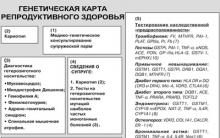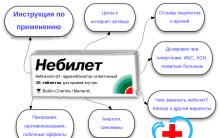On Poklonnaya Hill they sometimes ask: "Which is higher - Vorobyovy Gory or Poklonnaya Gora?"
We look at the topographic map of Moscow in 1987. The height of the Sparrow Hills is 191.2. The height of Poklonnaya Hill is 170.5. Now we can safely say that Vorobyovy Gory is 20 m higher.
I still meet information that Sparrow Hills is the highest point in Moscow. The highest one is located in the south of the capital, near the metro station Teply Stan. Closer to the Moscow Ring Road, a geodetic sign with a mark of 254.6 is installed. It is he, and not a boulder, set 150 m to the northeast at the beginning of Novoyasenevsky Prospekt, that indicates the highest point.
It is often believed that Poklonnaya Gora is so named because here:
"Napoleon waited in vain,
Intoxicated with last happiness,
Moscow kneeling
With the keys of the old Kremlin"
In fact, there were many Poklonny Gory in Russia. There are not far from Suzdal, in Pskov, in St. Petersburg ... In Moscow there were several bow mountains - on the Yaroslavl, Kaluga, Serpukhov, Mozhaisk roads. Perhaps the high hills were called so, because earlier, approaching the capital, a traveler from a height, from afar, saw the golden domes of Moscow churches. And from here he bowed to Moscow. And perhaps the name comes from the fact that here with a bow, with bread and salt, they met foreign guests who came to us from the West. There is another version that earlier here, at the entrance to the city, they took "bows", a kind of tax.
Now Poklonnaya Gora is an artificially created hill. I found a map in Sytin's book "From the history of Moscow streets" (1958 edition):
Those. Kutuzovsky Prospekt was laid in the place of the top of the hill.
From the highest hill and the Square of the Winners goes the Alley Years of War. It consists of five large platforms, one for each year of the war from 1941 to 1945. Wide, uncomfortable steps are made between the platforms. They are deliberately made uncomfortable, so that everyone who rises to the Victory Square, to Victory, feels all the difficulty of this path. Fountains work along the Alley in summer. In the evening, they are illuminated with a scarlet-red light and do not resemble water, but the shed blood of 26 million 600 thousand people (this is only according to official data).
Also along the Alley there are steles with the flags of those fronts that took part in the final stage of the war. Moreover, the steles are in the order in which these types of troops performed at the Victory Parade on June 24, 1945.
The alley originates near another hill of Poklonnaya Gora. At its base you can see a flower clock, from which all tourists go crazy. The clock has a diameter of 10 m and is the largest in the world.
And I pay attention to the top of the hill. There, on the night of June 22, representatives of the Moscow Patriarchate erected a cross in memory of the 50th anniversary of the start of the Great Patriotic War.
The Memorial Park on Poklonnaya Hill has such a large territory that it is better to look at it from the window of a small train that runs through the green area in summer. And you will listen to the audio guide all the way.
The museum itself is very interesting, it requires a separate day of visiting. It works every day, except Monday, from 10 am to 7 pm. And if you go down to the Kiev railway line, you will see an open-air museum of military equipment. A ticket costs 70 rubles, permission to take pictures - 100 rubles.
Photo by SVS. Here you can see many photos -
Not far from Khotkovo there is a place associated with the name of Sergius, this is Poklonnaya Gora. You know from His Life about the case when Sergius's friend Stefan, Bishop of Perm, was traveling to Moscow and, not having time to visit Sergius, stopped on a hill and, turning towards the Sergius monastery, said: "Peace be with you, spiritual brother!"
The Monk Sergius was sitting at that time with the brethren at a meal, suddenly he got up from the table and, after a brief prayer, bowed with the words: “Rejoice you too, shepherd of Christ’s flock, and may the peace of God be with you!”
The brethren were surprised at this behavior of the mentor. Sergius explained: “Bishop Stefan, on the way to Moscow, stopped in front of our monastery, and blessed us humble ones” / 6, p. 195 /.
In memory of that event, a cross was erected, from which the army of Minin and Pozharsky, going to save Moscow, received a blessing. Then a chapel was built. Nowadays, there is neither one nor the other. A few years ago, a cross appeared with the inscription: “Through the prayers of St. Stephen the Great of Perm and our Reverend Father Sergius Igumen of Radonezh, Lord Jesus Christ, Son of God, have mercy on us sinners.”
Source: http://etikavomne.agni-age.net/biograph/4tenia14.htm
The chapel in the village of Ryazantsy (second half of the 17th century) marked a revered place on the way of pilgrims to the Trinity-Sergius Lavra. This old brick small building was demolished in 1939. At the chapel at the end of the 19th century. a school house for boys was built (architect A. Latkov). In front of the chapel there was St. well prep. Sergius, and this place itself is located 3 km from the ancient Radonezh, the birthplace of the saint. Legend marks this place with the spiritual rendezvous of St. Stephen of Perm and Rev. Sergius. A worship cross was placed here, then it was built with a wooden chapel, and in the 17th century. the chapel was built in brick and stone. The place began to be called at the Cross, the chapel of the Cross, Poklonnaya Gora. After the revolution in the 1920s, this Lavra property was transferred to the Moscow Geological Prospecting Institute, from which a proposal was made to recreate the revered chapel on the old foundation. To carry out the reconstruction, all the images of the chapel before the demolition that could be found, as well as analogues from Russian architecture, were involved. The project was carried out under the guidance of the honored restorer, professor of architecture I.B. Purisheva.
Source: http://www.artklimov.ru/view.php?id=582
Two versts east of Vozdvizhensky on the road to the Lavra at the village of Ryazantsy until the 1930s. there was a stone chapel "Cross" of the 17th century, built in memory of the miraculous event, which tells the Life of St. Sergius of Radonezh:
"Stefan, Bishop of Perm, had great spiritual love for St. Sergius. Once he had to travel from Perm to Moscow. The road was several miles away from the monastery of the saint. And he decided, hurrying along the road, to visit the monk on the way back. Stefan was opposite the monastery, he stopped and said “It is worthy to eat” and the usual prayer, bowed to St. Sergius in that direction, saying: “Peace be with you, spiritual brother! “The blessed one was then sitting at a meal with the brothers. Having understood everything in the spirit that Stephen had done, he got up and, after praying, answered: “Rejoice you too, shepherd of Christ’s flock, and may the peace of God be with you!” The brethren were surprised at the behavior of the hegumen, some of them understood that he had some kind of vision. At the end of the meal, his disciples began to ask about what had happened. He revealed everything to them, saying: "I got up when Bishop Stephen was walking along the road to the city of Moscow and in front of our monastery the saint bowed Trinity and us, the humble, blessed. "He also pointed out the place where it happened. The Trinity monks hurried there, wanting to find out if everything happened as Sergius told them. They caught up with those who were walking with the bishop. And they were convinced which truly was just as the saint had said, but they marveled at the prophetic gift with which their abbot was endowed."
Before the revolution, a procession from the village was made here, and the Cross from the chapel was brought to the temple on the Feast of the Exaltation. In the 1930s the chapel was destroyed. The place where she stood belongs to the range of the Geological Prospecting Academy. Now at the side of the road stands a beautiful cross, erected on May 9, 1996 in memory of the 600th anniversary of the repose of St. Stephen of Perm.
Cross on the road
In Russia, the tradition of establishing worship crosses is being revived. Today they are placed at the entrance to cities, at the site of destroyed temples, on hills, in memory of the victims of repression, along highways at accident sites, and even in honor of the creators of the T-34 tank.
But what is the true meaning of the worship cross? And how does a worship cross differ from a votive or missionary cross? The correspondent of "NS" Alexander LANI tried to figure it out.
Who bow on Poklonnaya Hill
Many Muscovites and guests of the capital saw a tall wooden cross standing alone on Poklonnaya Hill. It was here that Napoleon waited in 1812 for the keys to the “defeated” Moscow. Most of the passers-by interviewed by the NS correspondent from those who were on Poklonnaya Hill on City Day associate the installation of the cross with the memory of those who died during the Great Patriotic War. Indeed, the cross was erected on the night of June 22, 1991, in memory of the beginning of the war by the community of the Church of the Life-Giving Trinity located nearby in Golenishchevo. According to the respondents, such a cross is reminiscent of the primordial faith, many consider the cross a spiritual symbol of the nation, a cultural monument. Therefore, two-thirds of the respondents are against the installation of crosses in the places of car accidents by relatives of the victims (“otherwise the whole country will turn into a virtual cemetery”), and only 20 percent are “for” (“this increases the vigilance of drivers”). But where did the tradition of placing large crosses in open places come from, and are they somehow connected with crosses in cemeteries?
"Sim win"
Calling all free-standing crosses "bow" is not entirely correct. Modern researchers - stavrographers call such crosses monumental. Within this group, crosses differ in their functions. At the same time, grave, missionary, commemorative, and other crosses can become worship. But more on that later.
The first monumental crosses appeared in apostolic times. They were erected by the holy apostles, announcing to the inhabitants about the beginning of Christian preaching in their lands. In particular, Nestor the chronicler in The Tale of Bygone Years mentions the erection of crosses by the holy Apostle Andrew the First-Called on the Kiev mountains, as well as on Valaam after the overthrow of the idols of Perun and Veles. An example of a missionary cross can also be considered the cross of St. Equal-to-the-Apostles Olga, placed on the banks of the Velikaya River near Pskov, in a place where the holy princess and her companions saw three heavenly rays converging on earth. And also the cross of St. Stephen of Perm on the site of his first sermon to the Perm people.
In times of persecution, the desire of Christians to confess their faith found an outlet in the images on tombstones and their form. And if in the central part of the Roman Empire, Christians did not dare to depict a cross on tombstones (there, the graves of Christians are recognized by the drawing of a fish, a vine, a dove with an olive branch, a monogram of the name of Christ:
then on the outskirts, where the authorities were less vigilant (for example, in Carthage), archaeologists found fragments of marble slabs depicting a cross. It is known that St. Gregory of Armenia placed crosses over the graves of Christian martyrs and taught the new converts to honor these commemorative signs.
In 312, the Roman Emperor Constantine the Great at the Milvian Bridge near Rome defeated his main rival for power, Maxentius. According to legend, on the eve of this battle, Constantine had a vision of the cross and a voice: “With this you will win!”. The victorious emperor ordered to place his statue on the Roman square with a high spear ending in a cross, with the inscription: “With this saving banner I saved the city from the yoke of a tyrant” (in 313, Constantine the Great, together with the eastern emperor Licinius, abolished the persecution of Christians by an edict on religious tolerance). Imitating the emperor, the rulers of the cities destroyed the images of local gods, replacing them with a cross. So, in Alexandria in the 4th century, the image of Serapis (an Egyptian deity whose cult was widespread in the ancient world) on walls, gates, columns of houses and squares was replaced with a cross as a sign of the fall of paganism and the establishment of Christianity. Two centuries later, by the cross installed on the hill, one could learn about the mass settlement of Christians. So, at the beginning of the VI century in Arabia, the rebellious Jews laid siege to the city of Nagran and demanded from the inhabitants, under pain of death, to renounce the faith and destroy the "cross standing on a hill." There were more and more Christians, and crosses began to mark those places on the banks of rivers and reservoirs where mass baptisms take place. And even when the baptismal was transferred to the churches, the old crosses remained and were maintained as a memorial sign.
Crosses in the fields and by the roads often remind of abandoned settlements: reverence demanded that a cross or even a chapel mark the place of an abandoned cemetery or temple.
A sign of gratitude or hope
Ivan Malyshevsky, the author of a popular article about the roadside crosses of the headman of one of the Kiev churches, Ivan Malyshevsky, who lived in the 19th century, has a version that in Russia the appearance of crosses near villages and cities is associated with the Tatar yoke. Allegedly, the most courageous of the inhabitants, who had taken refuge in the forests from the "predatory guests", returned to the ruined dwellings and put up crosses on elevated places as a token of gratitude to God. At the same time, the crosses served as a sign for the rest of the "refugees" that the trouble was over.
According to Svetlana Gnutova, candidate of art criticism, a leading expert in the field of stavrography, this hypothesis still needs to be tested. But it is known for sure that crosses near villages and cities, as well as at the forks in the road, existed even before the invasion of the Tatars, in the 11th-12th centuries. True, only those of them that were carved from stone have come down to us. The most famous are the venerable Bogolyubovsky cross, according to legend, erected in the time of St. on the shore of the strait connecting lakes Lopastitsy and Vitbino. The last two crosses, erected in the 12th century, were located in the current Penovsky district of the Tver region and consecrated waterways. According to historians, the first reminded of the hard work to deepen and widen the Volga channel, the second - of an artificial canal from the sources of the Kud River to the sources of the Pola River. All these crosses are now in museums.
In 1694, during a pilgrimage to the Solovetsky Monastery in the Unskaya Bay on the White Sea, Tsar Peter I almost died during a storm. In gratitude to God for the salvation, the monarch placed a wooden cross on the shore of the bay. When it was transferred to the Pertominsk Monastery (the base of the cross rotted and it fell), then at this place the peasant Peter Chelishchev erected another wooden cross - in memory of the first cross. Such a tradition of renewing crosses that fell into disrepair was very common (the former cross was transferred to the temple), and they tried to cut out the new cross in exactly the same way.
“There were many so-called votive crosses in Russia,” says Svetlana Gnutova. - For example, during an epidemic of plague, cholera or pestilence among livestock, in the hope of deliverance, people gathered for joint prayer and made a vow to God to erect a cross or a wooden temple in one night. Please note: not at the end of the misfortune, namely during it. And the sickness stopped. Such votive crosses (and sometimes chapels) stood at roadsides, at forks, crossings, at the confluence and source of rivers, springs, at the same time designating the key points of land and waterways. The most noticeable place was chosen for them - so that everyone walking by would honor the cross with the sign of the cross and prayer. And the fact that wooden crosses did not survive to us from early centuries does not mean at all that they did not exist. It is known that in the cholera 1817 there were many religious processions in the villages, and they, as a rule, ended with the hoisting of the cross. In the western Russian lands, many crosses were erected in the cholera year of 1831.
Pomeranian fishermen and Solovetsky monks had a tradition of putting a votive cross before going out to sea in order to safely return home. And upon their happy return, they already put up thanksgiving crosses. In the northern regions, crosses often served as navigational signs (the upper end of the sloping crossbar pointed exactly to the north), information about them was contained in sea sailing directions. Sometimes those who got into trouble at distant camps put up crosses in order to give a message about themselves to passing ships. Such crosses stood, for example, on Novaya Zemlya.
There were cases when crosses were placed simply in dangerous and dead places. Ivan Malyshevsky cites the fact that such a cross was placed "in one of the Kostroma forests by the road, at the place where the robbers killed the postman." The cross was supposed to secure this place from "the repetition of such misfortunes on it."
In Lithuania, in the city of Siauliai, there is a Cross Hill, on which there are about 3 thousand votive Catholic crosses. Nothing can be said with certainty about the time of its appearance, nor about the causes of its occurrence. Some researchers believe that before the baptism of Lithuania, which took place only in the XIV century, there was a pagan temple on this hill
The cross as a call
Sometimes crosses were placed so that there was a place to pray until a temple or chapel was built. It is these crosses that are called worship. Their height was at least four or five meters, and prayers and other services were served near them. Worship crosses were also placed in the places of destroyed temples - where there was a throne and a bloodless sacrifice was made (this place was specially fenced off as holy). The same tradition is continued by modern missionaries visiting distant villages in the north and northwest of our country. Together with local residents, they set up a worship cross where the altar of the destroyed temple once was. If there was no temple, then the cross is placed where the missionary temple-tent stood during the campaign and there was a throne. From that moment on, such a worship cross becomes a local shrine. In the Karelian village of Shunga, a businessman, passing by and seeing a cross erected by missionaries, allocated funds for the construction of a chapel in this village.
In 2003, in the village of Sholokhovo near Moscow, near the Museum of the T-34 tank, a bow cross was erected in honor of the designers of the tank and all its combat crews. Prayer services and memorial services are served around him.
Today, worship crosses are also being erected in places where new Russian martyrs and confessors suffered. Such a 17-meter wooden cross, brought from the Solovetsky Monastery, was installed at the Butovo training ground in memory of the mass repressions of the 1930s (from August 1937 to October 19, 1938, 20,765 people were shot there). The cross was cut for about six months, it, like the one on which the Savior was crucified, consists of three types of wood: cypress, cedar and pine. A stone from Solovki was laid at the base, so that the cross symbolically connected two Russian Calvarys: the Butovo training ground and the Solovetsky Special Purpose Camp (SLON). On the cross itself are carved prayers glorifying the feat of the new martyrs who suffered for the faith. “The cross is a call and a reminder to all of us so that we can finally wake up and comprehend what happened to us then and what is happening now,” says one of the authors. Butovo worship cross, head of the cross-carving workshop of the Solovetsky Monastery Georgy Kozhokar. - Think for yourself, here only 900 priests were shot. And how many simply believers who have not denied God? This cross is a tribute from our generation to those who suffered as martyrs for us, so that we can now live and freely confess our faith. A reminder that this right is paid for with the blood of those who lie in these ditches and other mass graves throughout the Russian land.
Worship cross to Solovetsky prisoners
In preparing the article, materials from the following books were used:
Stavrographic collection. Cross in Orthodoxy / Ed. Gnutova S. V. - M .: 2001. T. 1
Svyatoslavsky A.V., Troshin A.A. Cross in Russian culture: Essay on Russian monumental stavrography. -- M.: 2005
Gnutova S.V. Cross in Russia. -- M.: 2004











How to cook frozen cutlets in a pan?
Pike perch baked in salt
How should a girl behave in a relationship with a guy so that he falls in love?
How osteochondrosis manifests itself on an x-ray Visible signs on the human body of osteochondrosis
What can be prepared for the festive table for Easter Easter table decoration and recipes